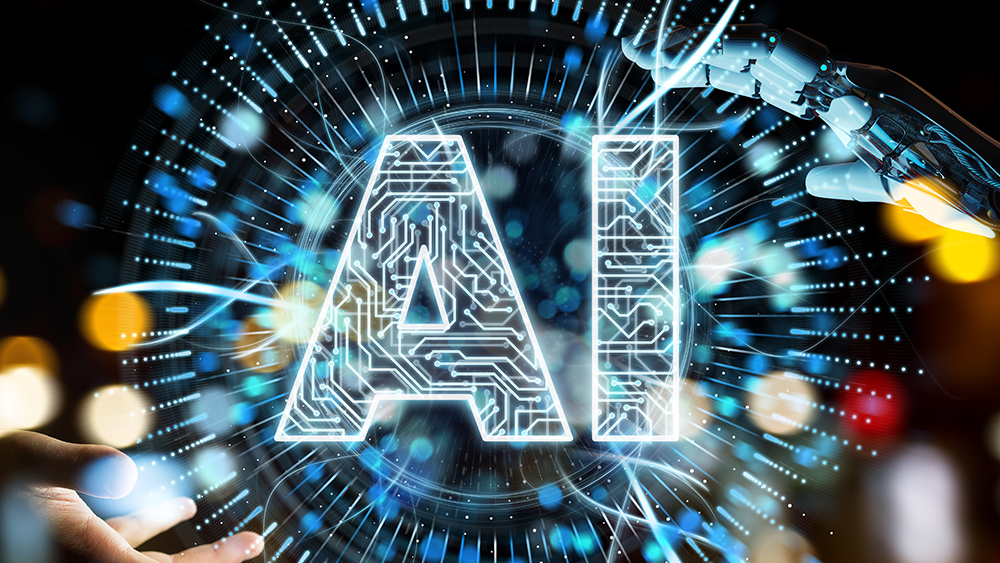The AI energy surge: How data centers are reshaping global electricity grids
05/31/2025 / By Belle Carter

- The rise of AI is driving an unprecedented surge in global electricity demand, with AI-related firms adding $12 trillion to the S&P 500 since 2022.
- Data centers, the backbone of the digital age, are experiencing explosive growth, consuming 1.5 percent of the world’s electricity in 2024 (415 TWh). This is projected to more than double by 2030, reaching 945 TWh, surpassing Japan’s total electricity consumption.
- The United States leads global data center electricity consumption at 45 percent, followed by China at 25 percent and Europe at 15 percent. In the U.S., Virginia alone consumes a quarter of the state’s electricity due to its concentration of data centers.
- While AI can lead to emissions reductions, it also raises concerns about its environmental impact. The International Energy Agency (IEA) highlights the immense power requirements of AI, noting a shift in focus from renewables to economic growth.
- The AI energy surge presents both opportunities and challenges. It could lead to energy savings in sectors like transport through innovations like autonomous vehicles, but also risks increased personal mobility.
In a world increasingly powered by artificial intelligence (AI), the electricity demand is reaching unprecedented levels. Since 2022, AI-related firms have surged into the S&P 500, adding a staggering $12 trillion to the market.
This transformation is not just about technology; it’s about the massive energy infrastructure needed to support it. As AI continues to evolve, data centers are becoming the new powerhouses of the global economy, consuming electricity at rates that rival traditional heavy industries.
Data centers, the backbone of the digital age, are experiencing explosive growth. In 2024, these facilities accounted for approximately 1.5 percent of the world’s electricity consumption, or 415 terawatt-hours (TWh). The United States leads the charge, consuming 45 percent of the global data center electricity, followed by China at 25 percent and Europe at 15 percent. This surge is not slowing down; by 2030, data center electricity consumption is projected to more than double, reaching around 945 TWh, surpassing Japan’s total electricity consumption today.
The scale of this demand is staggering. A typical data center already consumes as much electricity as 100,000 homes. However, the new generation of mega data centers under construction will consume 20 times more, equivalent to adding two million homes to the grid.
In Virginia, the epicenter of industrial data, data centers consume a quarter of the state’s electricity. This demand concentration is not evenly distributed, with nearly half of the U.S. data center capacity located in just five regional clusters. (Related: Ireland’s electricity crisis: AI data centers to consume one third of national grid by 2026.)
AI’s insatiable appetite for power
AI is the primary driver of this unprecedented energy demand. In the United States, data centers are expected to account for nearly half of the growth in electricity demand by 2030. By the end of the decade, the country will consume more electricity for data centers than for producing aluminum, steel, cement, chemicals and all other energy-intensive goods combined.
The International Energy Agency (IEA) recently released a report highlighting the immense power requirements of AI. The report acknowledges that while AI can lead to emissions reductions, it also raises concerns about its environmental impact. The IEA’s shift in tone, from emphasizing renewables to making excuses for industry, reflects a broader trend of prioritizing economic growth over environmental sustainability.
Not all countries are equally equipped to compete. Australia, for example, faces challenges due to its ban on nuclear power and reluctance to build coal plants. Similarly, New Zealand, Norway, Sweden and Canada are lagging in the AI energy race. The ability to provide reliable and affordable electricity is crucial for countries looking to capitalize on AI’s potential.
AI’s influence extends beyond data centers, with significant implications for energy efficiency and mobility. In the transport sector, AI applications are being used to manage traffic, optimize routes, predict maintenance needs and develop autonomous vehicles. These innovations could lead to energy savings equivalent to the energy used by 120 million cars. However, the widespread adoption of autonomous vehicles could also lead to increased personal mobility, potentially offsetting some of these gains.
The AI energy surge is reshaping the global electricity landscape, presenting both opportunities and challenges. As data centers become the new powerhouses of the digital age, the demand for reliable and affordable electricity will only grow. The historical context of energy transitions underscores the importance of this moment, as countries with energy to spare are poised to dominate the AI landscape. The challenge lies in balancing the benefits of AI with its environmental impact, ensuring that the energy systems supporting AI are sustainable and equitable.
Watch the video below that talks about data centers as massive resource users.
This video is from Hammer It Out channel on Brighteon.com.
More related stories:
Microsoft scales back AI data center boom as China’s DeepSeek upends the market.
Sources include:
Submit a correction >>
Tagged Under:
AI, data centers, Ecology, electricity, energy supply, environ, future science, future tech, global economy, IEA, new energy report, power, power grid
This article may contain statements that reflect the opinion of the author
RECENT NEWS & ARTICLES
COPYRIGHT © 2017 INVENTIONS NEWS



















